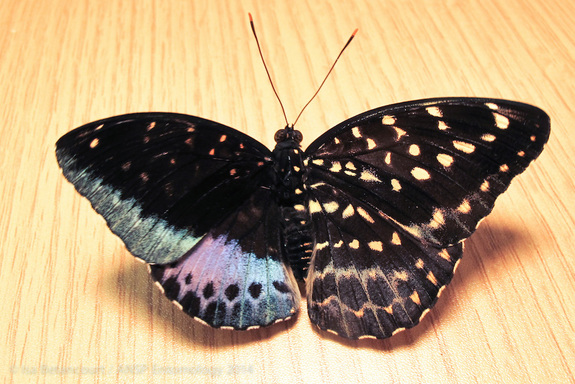A retired chemical engineer noticed that the insect's two right wings were typical of the females of its species — they were larger, and brown with yellow and white spots. But its two left wings were smaller and darker, with splashes of green, blue and purple, a pattern characteristic of males.
He spotted the creature while emptying out the butterfly exhibit's pupa chamber, where the insects hatch from their chrysalises and cocoons. "It slowly opened up, and the wings were so dramatically different, it was immediately apparent what it was," he said.
A butterfly expert later confirmed that the remarkable insect was a Common Archduke butterfly (Lexias pardalis) with a rare condition called gynandromorphy, which means outwardly having both male and female characteristics. (This is distinct from hermaphroditism, in which an organism has both male and female reproductive organs, but has external characteristics of one gender.)
The condition is most commonly noticed in birds and butterflies, whose two sexes can have very different coloration. It can occur when the sex chromosomes fail to separate during cell division in early development, a process known as nondisjunction. As a result of this failure, some of the animal's cells have a female genotype, and others have a male genotype, giving rise to an animal with both male and female characteristics.
Because gynandromorphy can be easily overlooked in species in which the two sexes look similar to each other, scientists don't know how rare the condition is.
Differences between the males and females of any species result from a process called sexual selection, in which one gender (usually females) select mates of the other gender based on the presence of certain traits, which become passed from generation to generation over thousands of years.
Source


 RSS Feed
RSS Feed
